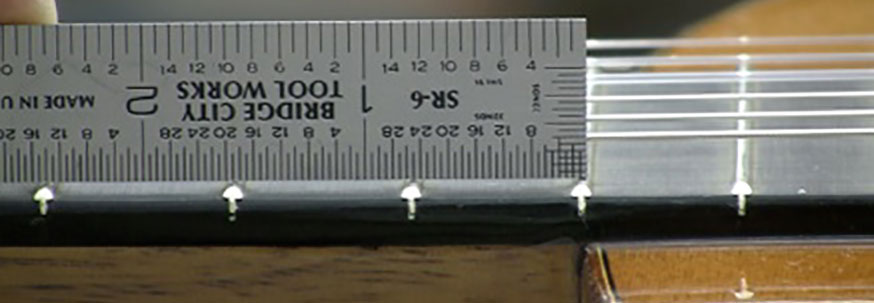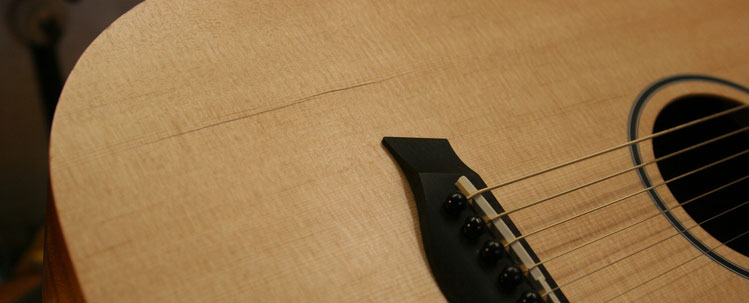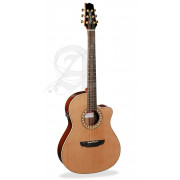INSTRUCTIONS FOR THE CARE AND MAINTENANCE OF CLASSICAL GUITARS, FLAMENCO GUITARS, ACOUSTIC GUITARS AND SIMILAR STRINGED INSTRUMENTS

ATMOSPHERIC AGENTS
Extreme humidity, as well as aridity, are both harmful for classical, acoustic and flamenco guitars. Sudden changes of environmental conditions from dryness to humidity or viceversa must be avoided at all times, as this can cause cracks in the wood, regardless of how well-cured the wood is.
Guitars should never be hung from a wall, as humidity which gathers on the wall can be transferred to the instrument. Excessive humidity can soften the glue and cause the woods to separate.
Wood is a hygroscopic material which easily absorbs and expels moisture, according to the climatic conditions. lt is recommended that you keep your instrument where there is between 40-75% relative humidity in the air. Where the humidity is less than 40%, the wood can crack and the action change. When the humidity is greater than 75%, the glue might soften, resulting in loss of sound and a buzzing due to the lowering of action.
When the guitar is carried in the luggage compartment of a plane, the strings should be loosened.
Guitars must never be placed in the boot of a car in sunny conditions, as temperatures can reach up to 75°, which would cause the instrument to break.
Wood is easily affected by temperature and humidity changes, therefore taking care of the surroundings of your guitar is very important in order to keep the instrument in a proper way. Gradual changes won’t generally do permanent damage but sudden ones do. For this reason it is important to avoid them and assure that the guitar acclimate to its environment.
As humidity increases, moisture content of wood goes up fast, causing it to expand and swell. When high humidity is combined with high temperature, glue joints could possibly become weakened and may even open slightly. Then, for example the glue under the bridge.
could weaken causing the bridge to pull off. On the contrary, if the moisture content of wood is forced down in a hurry, portions of it shrink faster than others, causing cracks and open joints. For all these reasons, rapid changes in local humidity are what you want to guard your guitar against. In view of that, you can follow the below recommendations:
Don't let the guitar next to a source of dry heat. (e.g. radiators, heater) since they raise the temperature and drop down the humidity of the surroundings.
Don't let the guitar exposed to freezing or blistering temperature for a long time, for instance inside a car park outside.
Avoid hanging your guitar on an outside wall during winter months. The wall will be cooler than the inside air. The result is a conflict between the temperature of the top and back, with potential damage as a result.
Store your guitar in its case when not in use. Humidity is easier to control in a smaller space. This allows the guitar to acclimate to room temperature more slowly, decreasing the possibility of wood and finish cracks.

GUITAR ACTION
The recommended action for the classical guitar is 4mm for the sixth string and 3mm for the first string, taking as a reference the top of the 12th fret and the lower part of the string whilst the instrument is properly tuned.
In flamenco guitar, string action is lower and as a reference we can give the following distances:
Height between the first string and the 12th fret: 2-3 mm.
Height between the sixth string and the 12th fret: 2.5-3.5 mm.
The guitar must always be properly tuned; when changing strings they must always be tuned up to pitch. At no time should all the strings be removed together as this would cause the top to lose tension. Each string should be replaced individually.
Due to hand perspiration wound strings tend to lose sonority. This can be remedied by removing the strings and putting them back in reverse. If this is insufficient, the strings can be washed in soapy water and replaced when absolutely dry.
lf the strings develop a sudden buzz when played open, it is probable that the winding has lost its original tension, or the groove of the nut has deepened. This can be corrected by changing the strings in the first instance or placing a thin piece of cardboard under the nut. If the instrument has been exposed to excessive humidity similar faults can develop.
Adjusting the Action
Action is the height of the strings and it is very important for playability. If this height is too high it is hard to play, but if it is too low the strings will buzz against the frets.
This adjustment is produced at the saddle of the bridge. Never use the adjustable neck rod for action adjustments. It is to be used to obtain the proper neck relief.
We recommend that a competent person does this action adjustment.

CRACKS AND WEAR
If a small crack appears on either the top or the back of the guitar, whilst not critical, it should be attended to by the manufacturer or an experienced repairer. When the crack is on the top, loosen the strings immediately.
lf, as a result of excessive dryness or age, the frets overlap the edge of the fingerboard, it is necessary to file this excess away. Although this is a very simple job, it is advisable that it should be done by a fully experienced repairer.
To clean a spot on the varnish, rub with a soft soapy cloth.
Due to the fact that some varnishes are incompatible, should deterioration of the varnish occur, it is advisable for any restorative work to be carried out by the original maker.
Contact us
By telephone
+34 918428684
Monday to Friday
From 10.00 to 18.00
By mail:
info@guitarfromspain.com
24h / 365








